It’s much easier for you to navigate with the new mobile apps for internal GPS navigation. To take it to the next level, the features a dedicated indoor navigation app to help you navigate places that common GPS-based mapping cannot. The solution helps you when you are looking for cafes or restaurants in a crowded shopping mall. Isn’t it great to have an app that has everything ready for you and all you have to do is just one tap? It makes easier the destination search even in an unknown place.
Table of Contents
- 1 What is an Indoor Positioning System & Navigation App?
- 2 How do Indoor Navigation Apps work?
- 3 Market Overview
- 4 The Main Features of an Indoor Navigation App
- 5 Benefits For Businesses
- 6 Used Cases for Indoor Navigation
- 7 How to Make Indoor Navigation App
- 8 How Much Does it Cost to Develop an Indoor Navigation Product?
- 9 Technologies Required for Indoor Navigation App
- 10 Bottom Line
✔ Indoor Positioning Systems (IPS) allow you to determine the location of objects or visitors inside buildings. Since GPS is untrustworthy indoors due to the lack of visual contact with GPS satellites, IPS must use other positioning methods. They include the generally accepted consumer standards for Wi-Fi or Bluetooth Low Energy (BLE), as well as solutions based on ultra-wideband (UWB) or passive RFID. The first and the key step in the implementation of systems is the choice of method and technology.
✔ The navigation apps allow finding precise locations in large spaces. This is the newest way to find your way. These IPS-enabled services help you prompt find locations at airports, railway stations, healthcare centers, etc. It shows the current positions of customers on maps and guides them along the shortest path so that they can fast get to the destination.
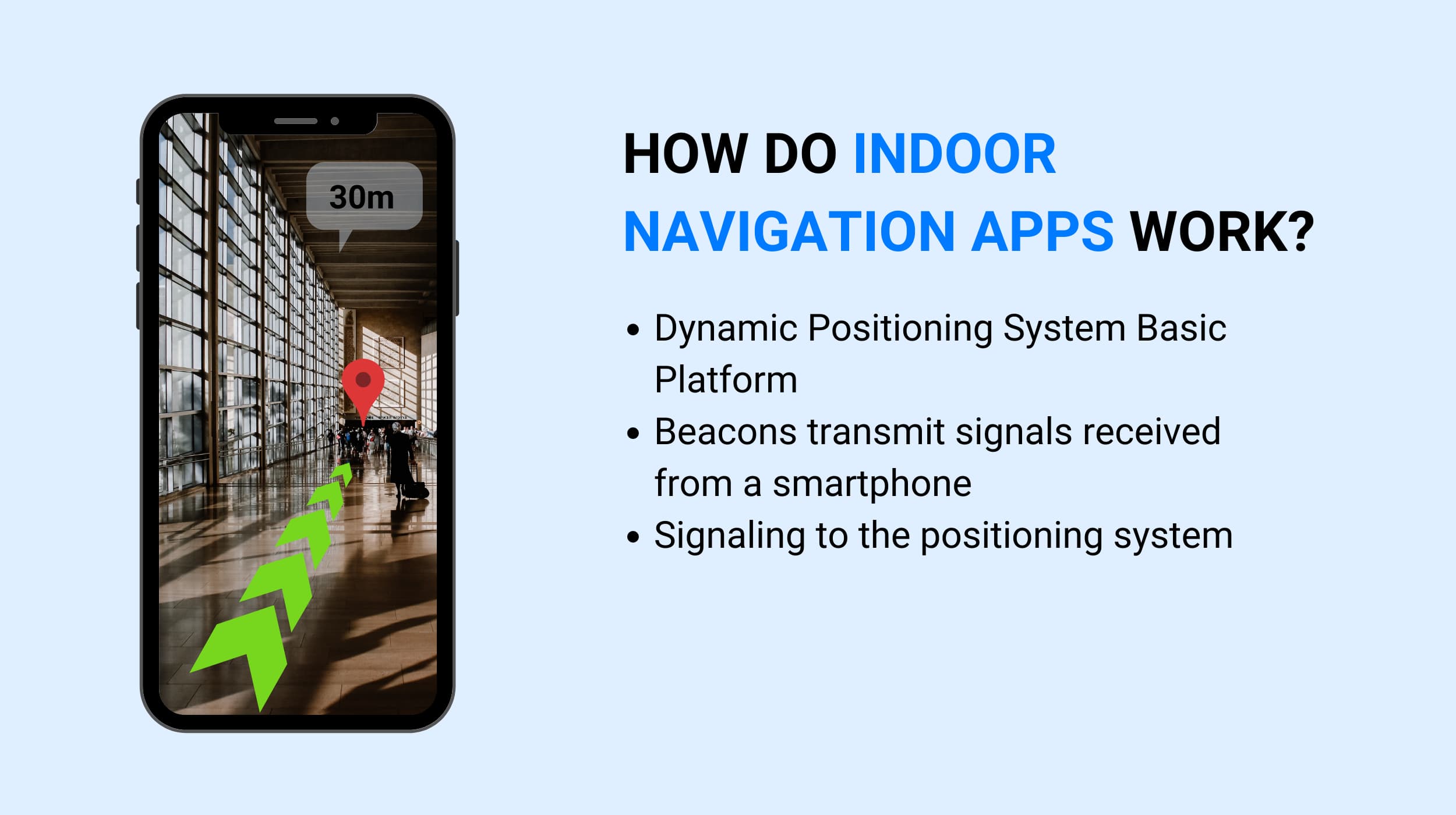
Typically, these internal positioning systems use your smartphone’s internal sensors to calculate the internal positioning of devices by simply using complex mathematical algorithms. It then combines the incoming data from the sensors in an intelligent way to calculate accurate device positioning and avoid any delays. To obtain and deliver accurate positioning results and user experience, this internal navigation system must rely on three main elements, such as:
- Dynamic Positioning System Basic Platform
- Beacons transmit signals received from a smartphone
- Signaling to the positioning system
These three main elements help to combine and collect data from different resources and calculate the exact position of the user. Hence, basically for an internal navigation app to work well, it needs a unique set of features, which we will discuss later. But first. Let’s take a look at the usefulness of an internal navigation system.
Market Overview
💰 The global indoor navigation market was valued at $6.92 billion in 2017 and is expected to grow to $23.6 billion in 2023 at a CAGR of 27.9%. The developed countries of North America and Europe remain the largest market for indoor positioning and navigation systems, accounting for the bulk of the global market. The United States is a major market for indoor positioning and navigation, accounting for about 40% of the worldwide market.
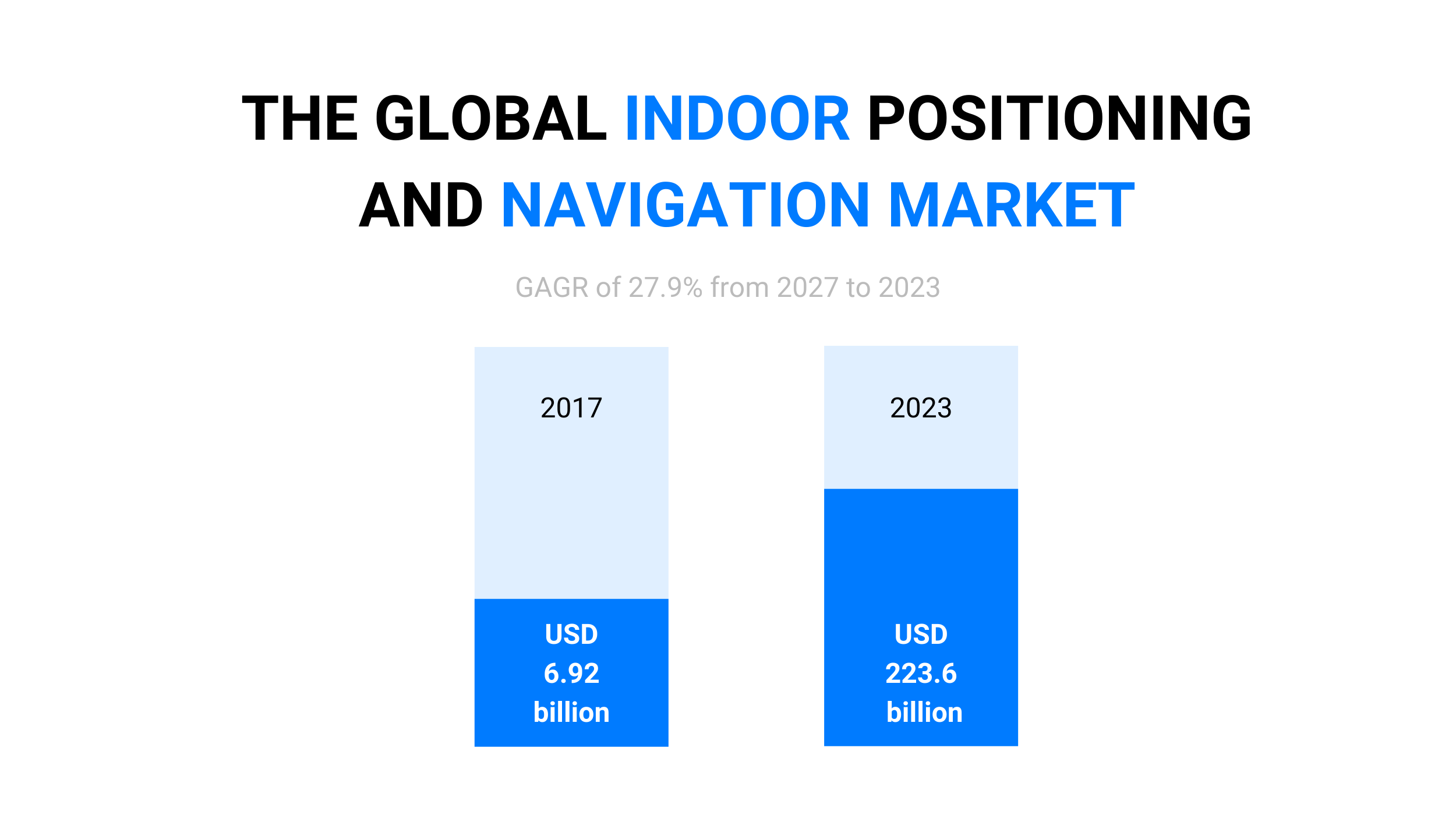
💰 The US market was estimated at $2.78 billion in 2017 and is expected to grow to $9.58 billion in 2023 at a CAGR of 28.1%. In the Asia-Pacific region, China and Japan are the key players in this market. The market in the Asia Pacific region is growing rapidly due to increased penetration and growth of indoor positioning and navigation applications in aviation, healthcare, logistics, etc. The market is projected to reach $8.75 billion in 2023, with a CAGR of 25.6%.
💰 The growing number of indoor navigation apps, as well as consumer demand, is driving the market in Europe. The UK has the largest share of the European indoor positioning and navigation market, accounting for about 25% of the market, while Germany follows the UK with about 21% of the European indoor positioning and navigation market.
Since internal navigation applications are handled with complex functionality, a detailed feature set is therefore required. Here is the list of the main of them.
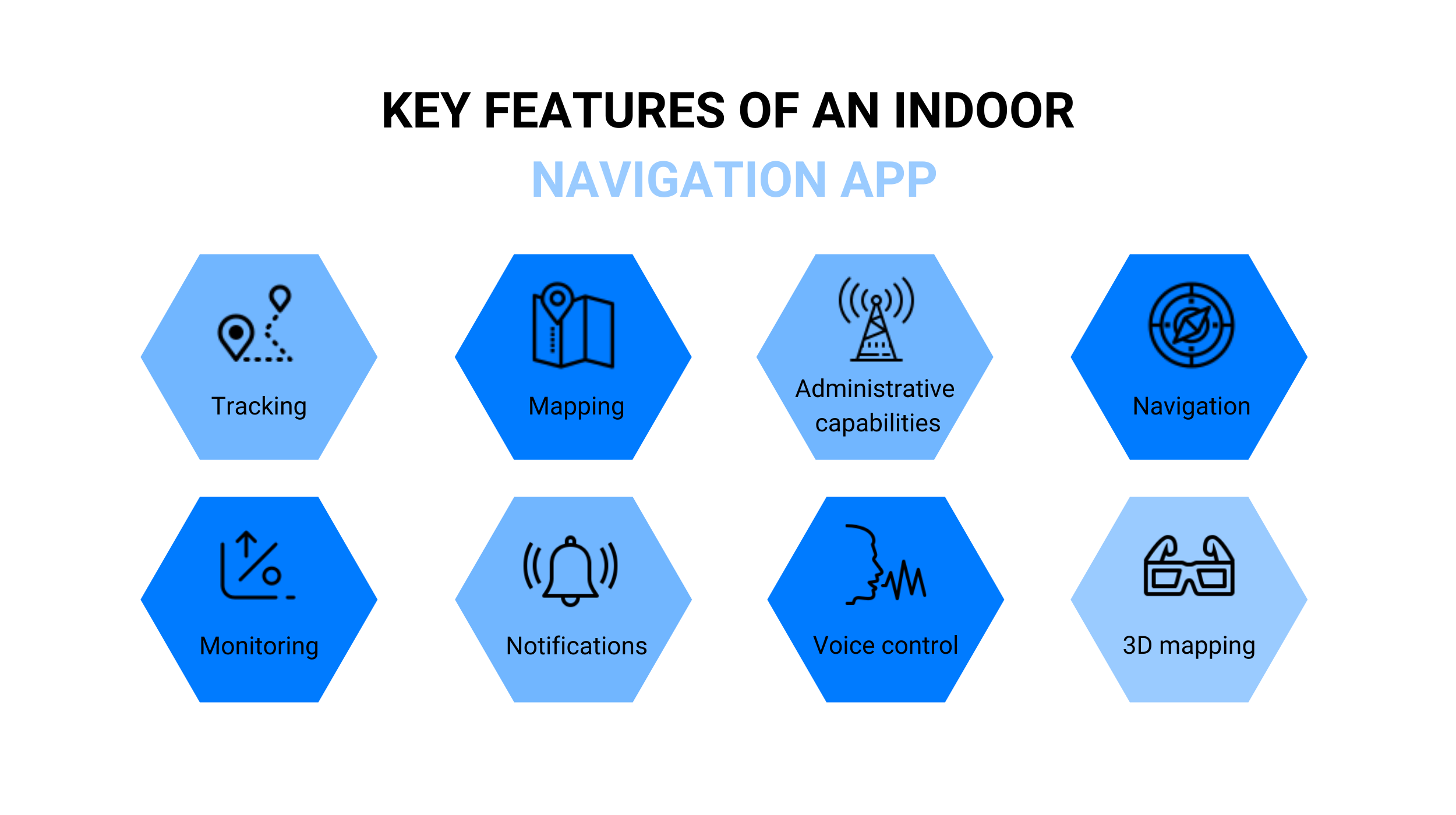
✔ Tracking
The positioning feature in the navigation app helps to determine the correct location of the device through multiple computing protocols and positioning patterns.
✔ Mapping
The display function in the navigation app helps users find the shortest routes to their desired destinations. The virtualization function of the internal navigation application allows you to get all the data on the number of people in the entire complex.
✔ Administrative capabilities
The Administrative Capabilities feature helps administrative staff effectively maintain beacons and helps develop advertising strategies for companies.
✔ Navigation
Navigation is one of the important features of an indoor navigation application. This allows customers to find out the fastest and easiest route to their desired destination.
✔ Monitoring
The monitoring provides statistics related to the number of people entering a complex, be it a motel, mall, mall, or hospital.
✔ Notifications
The interior navigation system design includes a feature whereby the software delivers push messages to visitors that direct them to their exact destination. Besides, push notifications to help you get the latest updates you know online. Check out the best push notification services and tools.
✔ Voice control
Voice control integration makes the indoor navigation app much easier and more convenient to use. For example, users can use voice commands to search for specific locations or specific locations within huge buildings and complexes.
✔ 3D map projection
It is very important to use virtual reality technology to integrate 3D map rendering as it helps users to access their map with 3D effects.
Benefits For Businesses
The new era of technology has increased the value of applications and delivered better services. These indoor positioning apps are useful and reliable when it comes to shopping malls, airports, train stations covering large areas. Besides, the advanced technology can be used even in offices, hospitals, colleges, and warehouses, as it makes it easy for users to find destinations with the shortest routes without any problem. And since we are talking about the idea behind these applications, they are mainly designed to assist in finding paths inside large complexes, buildings, since GPS does not work there, and thus an indoor navigation app is useful for smartphone users to get to their destination.
- Collect data on users’ favorite places, number of visitors, time spent, etc.
- Send notifications
- Link the app to the product and initiate actions, such as sending a notification to the user about the location of the product, which is added to their wishlist as soon as they go to the physical store.
An in-house navigation app not only makes life easier for customers but also helps business owners gather important information and work to improve their apps.
How to Make a Location-Based App Tailored Exactly to Your Needs
Indoor navigation is used in several cases. It helps people get to their locations or destinations. It also provides useful information to premises authorities, facility managers, and sales coordinators.
- Health centers
Such apps help people in the hospital. Visitors can find a certain department without wandering around the room with help. Therefore, the app, step-by-step instructions for users will always help people who are already under stress and can save lives during a crisis when a patient needs urgent care. - Office rooms
Finding a conference room, restroom, or department becomes a cakewalk with indoor seating in offices. employees can always designate which conference rooms are available. - Shopping centers and large stores
The main use of indoor positioning in shopping malls is to provide shoppers with step-by-step instructions for a particular store. In large shopping centers, this helps to search for products of a specific category. - Institutions
Institutions are implementing the latest technology. They decide to simplify the building or campus with an internal positioning system so that students can use the resources provided by institutions such as libraries, laboratories without wasting time. - Airports
Indoor apps can make the lives of travelers much easier. This technology will be a lifesaver for those rushing in time to catch a flight, with step-by-step instructions prescribed so that they can always get to the desired boarding zone along the shortest path.
While we know how indoor navigation app can be helpful for businesses, how exactly do you create them? In this tutorial, we’ll walk you through three basic step-by-step principles.
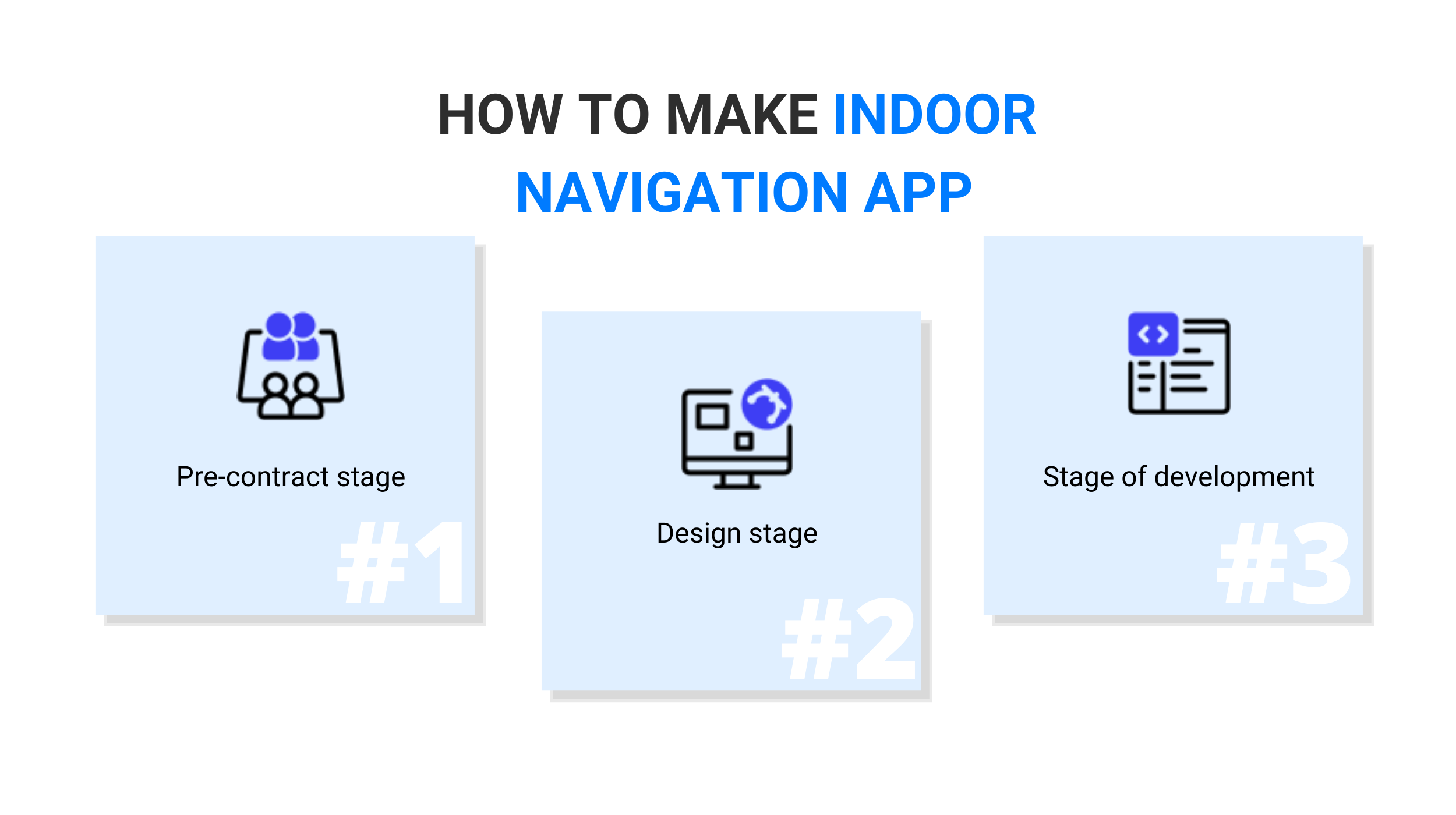 Step#1. Pre-contract stage
Step#1. Pre-contract stage
This is where a software company can refine its project and customer business needs, brainstorm on the most effective options, and therefore develop a technical strategy. Here, business analysts and project managers work together with product owners and stakeholders to create a consistent overall vision for an AR app while respecting all project constraints (such as budget, timeline, enterprise environment, and technology). In addition, technical analysts provide an overview of the available development tools, making it easier to select a technology stack.
Step#2. Design stage
This phase focuses on regular wireframing, sketching, mock-ups, mapping, creating 3D objects, and more.
Step#3. Stage of development
One of the problems with indoor navigation is that it does not have access to the vast satellite map data that outdoor navigation has with Google Maps and Apple Maps. Because of this, it is necessary to create custom maps for each building and interior space. Quality and scalability are important factors that can determine the success of a card.
Besides, the stage consists of creating a Proof of Concept (POC) to test the idea and the result in the shortest possible time. You can even create a hardcoded route and customizable features such as voice recognition if needed. To develop an AR-based IPS application, you must use Apple’s AR Kit or Google’s ARCore software development kits as required by the project.
The cost of building an application for internal positioning depends on the business requirements of the application, and a rough idea can be obtained depending on the features, functions, location of the developer company, the number of platforms for which the application is being developed, etc. In some cases developing an internal navigation system can be costly if integrated with advanced features and technologies.
However, once the application has been developed, there are several services that the company has to pay for, for example:
- Arbitrary Services;
- BLE Beacons to transmit push information and updates to clients;
- Mobile updates, as internal navigation apps need them to avoid any problems;
- The cost of creating a server, since the servers store all the information about the maps from all directions;
- Paid subscriptions for a specific position or location, and PaaS (Platform as a Service).
In the case of Code&Care, we offer outsourced product development starting from $34.50 hourly and extended team & staff augmentation $4800 monthly.
While looking for in-house navigation app services, you should be known that there is a lot of effort involved in developing these apps. This kind of application requires equipment that falls into 3 key types, and these approaches should be combined with others to enable precision.
⚙ Wi-Fi рotspots
Wi-Fi рotspots serve as signal transmitters. Besides, they do not calculate the location of the person. But your device does it, and this results in a drain on the battery.
⚙ BLE beacons
They have long battery life and range precision from 2 to 3 meters. The internal navigation system of iOS and Android-based BLE beacons calculates the path on the server and thus dispose of the additional load on the person gadget. Although for this, the user must be in the range of at least 3 BLE beacons. The number of beacons depends on the number of barriers. Using the internal calculator, the application can define the number of required beacons.
⚙ Geofencing
The geofencing uses the device’s built-in compass and the geomagnetic map of the venue. Meantime, the magnetic field must be stable.
You need to be very confident in the way things work and what technologies are the most suitable. It’s critical that the in-house app is feature-rich and can assist you in getting great results in a short time.
Bottom Line
Above, we have covered all the important aspects of mobile in-house navigation applications and how to build them for the best use by enterprises and provide many benefits to users. Hence, if you want to create such an application, just contact an internal navigation application development company to get the results you want.
📌 Read also:
- How to Build a Rideshare App: Types, Features, Cost and Challenges
- Logistics Mobile App Development: Types, Features and Technology Stack
- How to Make an App Like Patreon: The Full 2022 Guide
- How to Create an App Like Discord: Features, Cost and Tech Stack

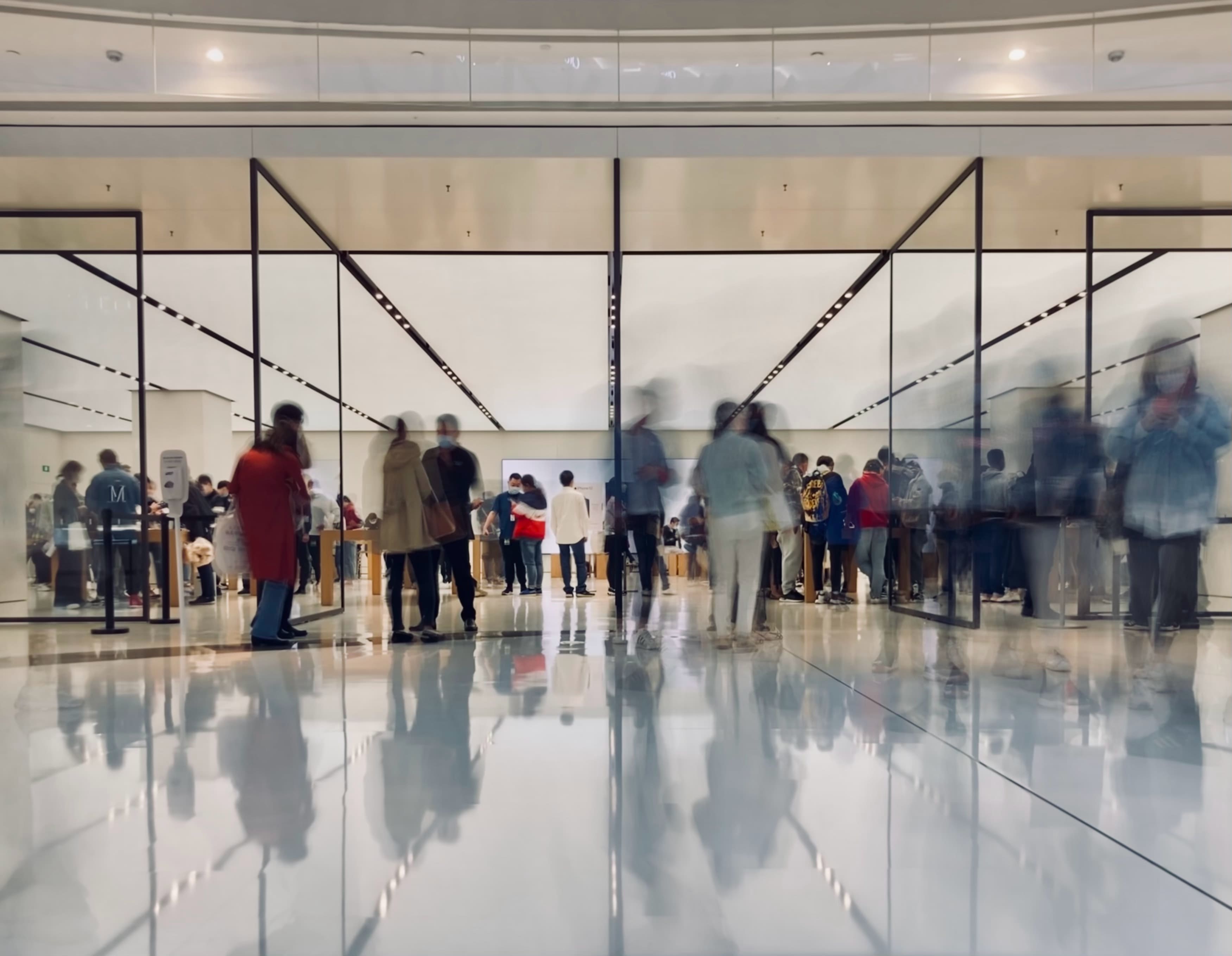














Popular
Latest